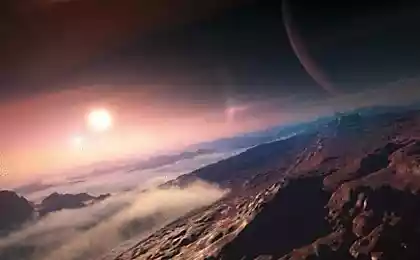615
Search for exoplanets in question: a space telescope "Kepler" has passed in emergency mode

The space for the benefit of science does not work one or two spacecraft launched by humans, such systems have dozens. One of these devices is the "Kepler" - NASA space telescope, which is designed to search for exoplanets. Its primary mission has been completed (in 2012), but the unit will continue to operate, making amazing discoveries.
For example, the telescope discovered (or rather, it is found, scientists analyzing data transmitted by the telescope), which over the past few years several times changed the subject brightness KIC 8462852. These changes in brightness can not be explained by the presence of a planet or a cloud of dust. Some scholars (not to mention "ufologists") talked about the presence of this luminary Dyson sphere. Discovery was set (opened about 1000 exoplanets, these findings are confirmed), and scientists hoped to continuing to work with the telescope "Kepler". But now the situation has changed - the system suddenly switched to emergency mode.
This means that the telescope minimum operating activity, but the maximum fuel consumption. April 4 NASA managed to connect with a telescope for the last time, and since then scientists have not received any evidence of malfunction. Go to the emergency operation came as a surprise to all, and yet it is not clear what it was.
Planet hunter @NASAKepler discovered in emergency mode on Thurs. Teams working to recover: https://t.co/jtuwjozE8w pic.twitter.com/RlhkIEwKXh- NASA (@NASA) April 10, 2016
The situation is complicated by the fact that the "Kepler" is in 120 million kilometers from Earth, and command execution unit produced is not instantaneous. And that is "on board", the scientists will know within a few minutes after the event. Round-trip signal is 13 minutes.
The hope for the restoration of the telescope works, scientists still do not lose. The fact that the problem has already occurred. For example, in 2013 the telescope is out of order, being on a heliocentric orbit. As it turned out, it stuck two of the four reaction wheels, which helped to position the telescope.
Now scientists are trying to figure out what really happened. Let's hope that things will get better, and "Kepler" will join the world's treasury of knowledge with new information about space and its "inhabitants". Even if the telescope fails, look for exoplanets will continue, with the help of other devices, both terrestrial and being in space. But this search is not as effective as the hero of this publication.
Source: geektimes.ru/post/274120/
Autopilot Tesla Model S to save your driver from a collision with a truck
Biped robot Schaft is gravity on the stairs. Loader time to look for a new occupation























